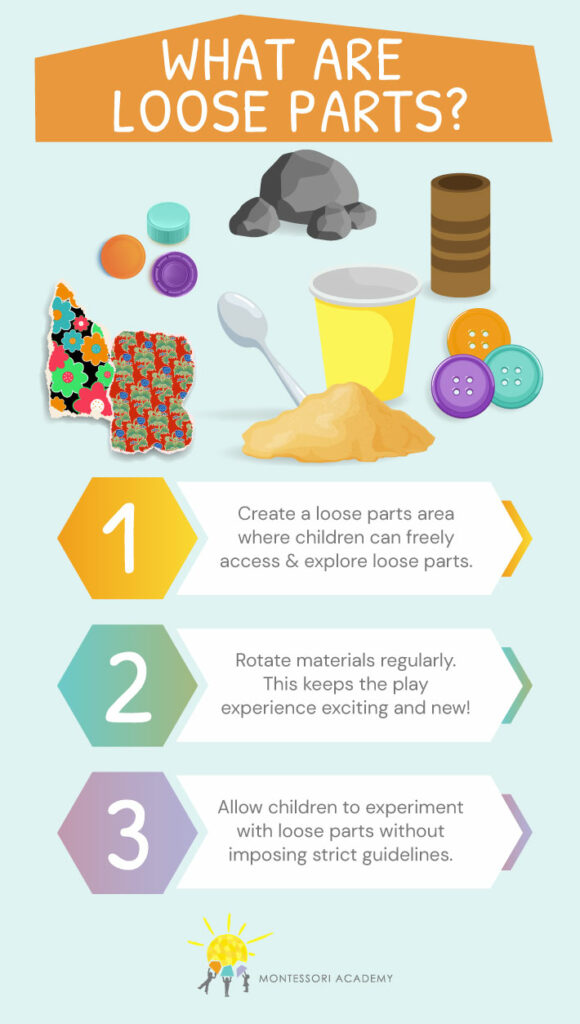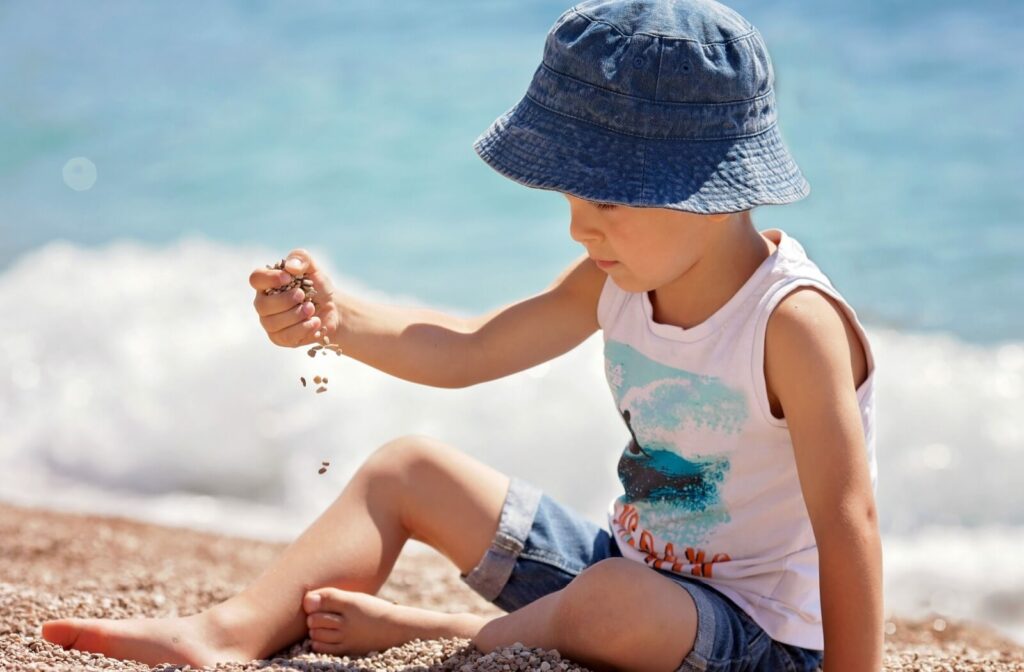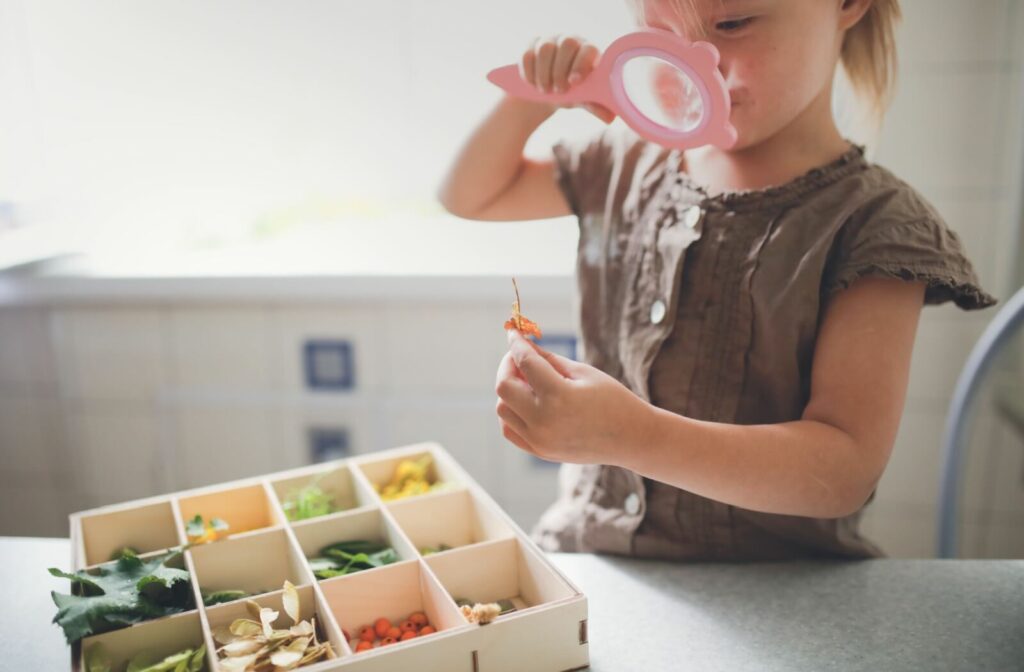In the world of childhood development and Montessori education, the concept of loose parts has gained significant traction. But what exactly are loose parts, and why are they important for educational play?
Loose parts are essentially open-ended materials that children can move, manipulate, and transform during play. These can be natural or synthetic items that are not fixed to any certain position or function. Examples include:
- Natural items like shells, pinecones, sticks, and stones
- Recycled objects such as bottle caps, fabric scraps, and cardboard tubes
- Everyday household items like cups, spoons, and buttons
Why Are They Called “Loose Parts”?
The term “loose parts” was first introduced by architect Simon Nicholson in the 1970s. Nicholson’s “Theory of Loose Parts” was developed from his observations and experiences designing play spaces for children. He believed that the richness of an environment significantly influences creativity and learning.
Nicholson proposed that environments with more loose elements—materials that can be used in multiple ways—stimulate greater inventiveness, imagination, and discovery among children. His ideas have since been embraced by educators around the world who recognize the value of providing children with varied and flexible materials to support open-ended play.
Loose Parts in Montessori Learning
In the context of Montessori toys and educational play, loose parts are anything that can be used to construct, create, and imagine. They are versatile and adaptable, allowing children to use them in many ways. This flexibility can help foster creativity, critical thinking, and problem-solving skills.
Benefits of Loose Parts Play
Loose-parts play offers a myriad of benefits for children’s development. First and foremost, it encourages creativity and imagination. With no predetermined purpose, these items can become anything a child envisions—from a makeshift kitchen in a playhouse to treasure in a pirate’s chest. This kind of open-ended play is crucial for fostering inventive thinking and problem-solving skills as children find new and innovative uses for the materials at hand. Some other benefits include:
- Promotes problem-solving: By offering open-ended materials, children learn to think critically and develop solutions through trial and error.
- Supports physical development: Manipulating different-sized objects helps fine motor skills, hand-eye coordination, and spatial awareness.
- Enhances social skills: When children engage in loose-parts play together, they practice communication, negotiation, and cooperation.

How Loose Parts Work in Montessori Education?
In a Montessori classroom, loose-parts play seamlessly integrates with the environment’s fundamental principles of child-directed learning and sensory exploration. Teachers can introduce loose parts in various subject areas to enrich their educational objectives.
There are several ways loose parts can be used in a Montessori context, from practical life to mathematics.
Practical Life
In the practical life area, children can use loose parts to practice skills such as pouring, sorting, and threading. For instance, small pebbles or beans can be used for spooning exercises, while buttons and beads offer excellent materials for threading activities.
Sensorial
Loose parts enhance the sensorial area by providing diverse textures, shapes, and colours for exploration. Natural items like pinecones, shells, and stones can be incorporated into activities that engage the senses. For example, children can use these items to create sensory bins or participate in texture-matching games, stimulating their tactile and visual senses.
Language
Loose parts can be employed in language development through storytelling and letter formation exercises. Items such as twigs and pebbles can be used to form letters on a mat, helping children understand the shapes and structures of the alphabet.
Incorporating loose parts in storytelling encourages descriptive language use and enhances vocabulary as children narrate their imaginative tales.
Mathematics
In Mathematics, loose parts can be used for counting, sorting, and pattern-making activities. Children might use bottle caps or stones to count and match quantities or create complex patterns and sequences. These activities support the development of number sense, classification, and logical thinking.

Examples of Loose Parts Open-Ended Play Experiences
Loose parts create endless opportunities for open-ended play. Here are a few examples:
- Building structures: Children can use sticks, stones, and cardboard to build forts, bridges, or towers.
- Art projects: Fabric scraps, buttons, and bottle caps can be transformed into beautiful mosaics or collages.
- Storytelling: Natural items like shells and pinecones can become characters in imaginative stories.
How to Use Loose Parts in the Classroom
Integrating loose parts into the classroom setting can enrich the learning experience. Here are some practical tips for educators:
- Create a loose parts area: Dedicate a space in the classroom where children can freely access and explore loose parts.
- Rotate materials: Keep the selection of loose parts fresh by rotating different items regularly. This keeps the play experience exciting and new.
- Encourage exploration: Allow children to experiment with loose parts without imposing strict guidelines. Encourage them to think outside the box.
Learn More at Mosaic Montessori Academy
Loose-part play is a valuable approach to fostering creativity, problem-solving, and social skills in children. By incorporating loose parts into home and classroom environments, parents and educators can provide enriching and stimulating experiences supporting holistic childhood development.
If you want to learn more about integrating loose parts play into your child’s routine or classroom, Mosaic Montessori Academy can help. Reach out to us today and discover how we can help your child thrive.


